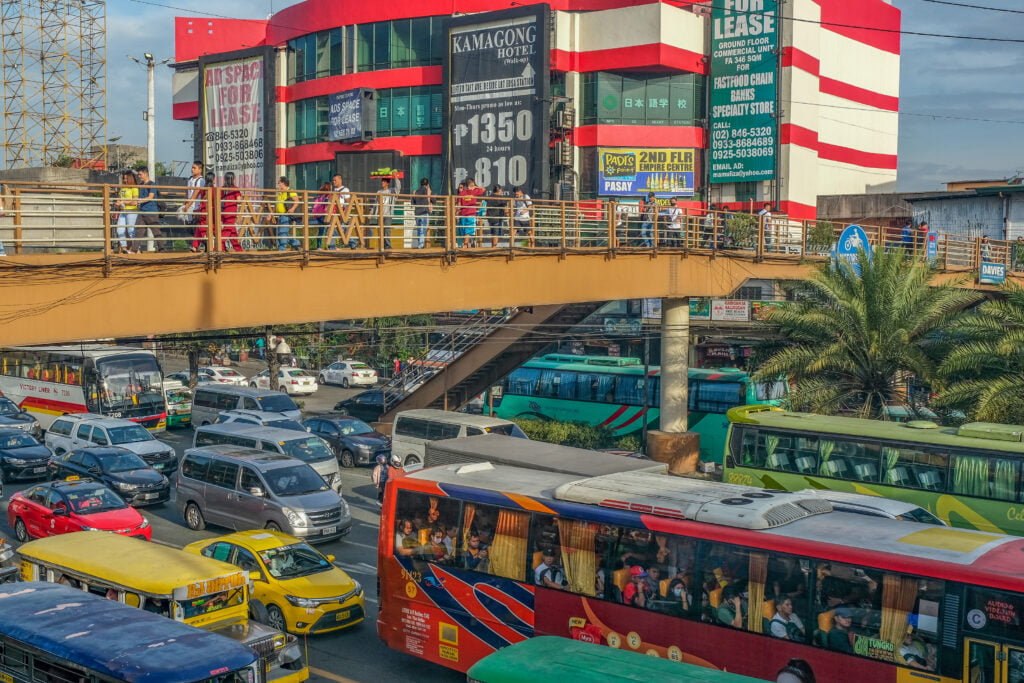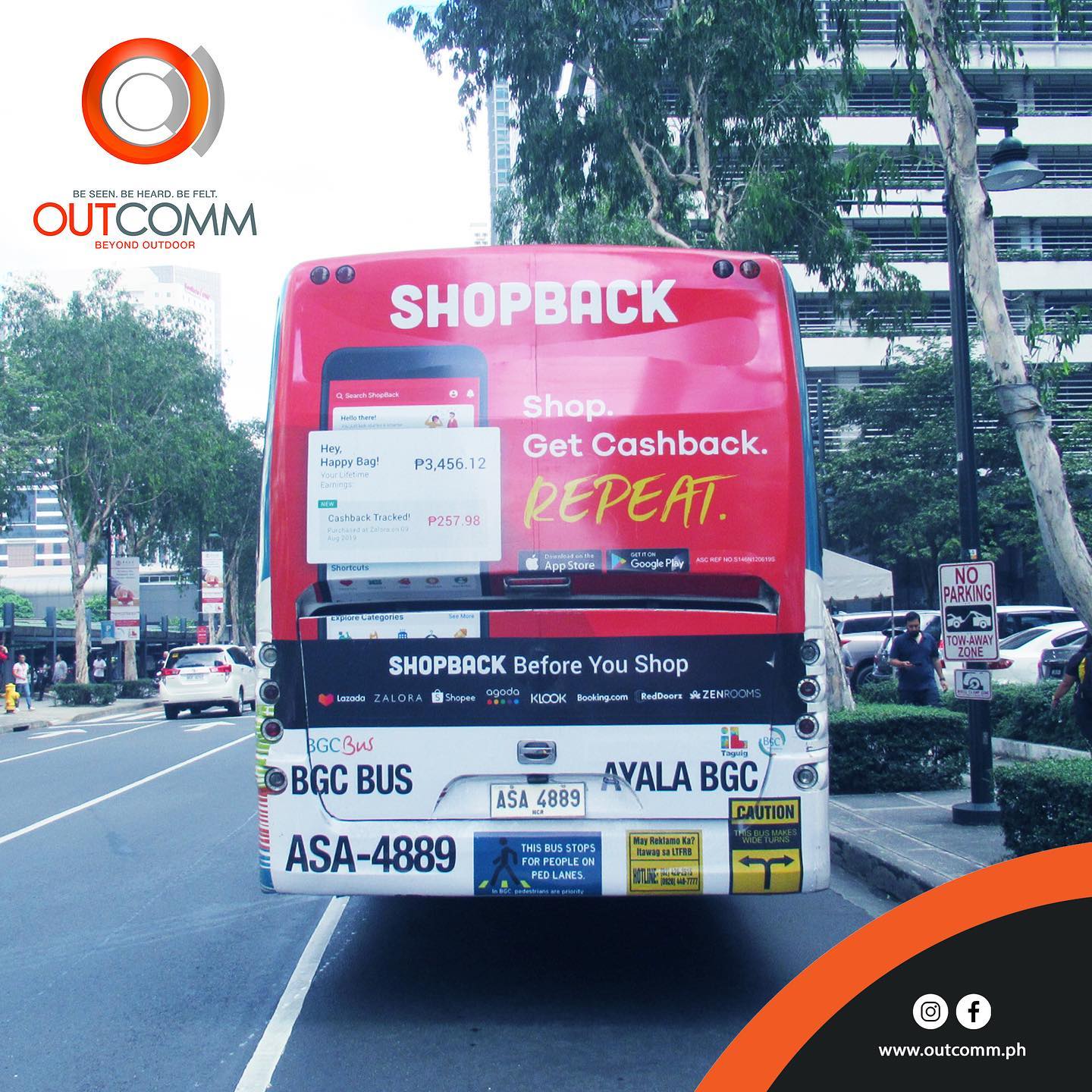Transit Advertising Philippines for Unmatched Brand Presence
Transit Advertising Philippines for Unmatched Brand Presence
Blog Article
Recognizing the Role of Transportation Advertising in Enhancing Brand Visibility and Customer Involvement
Transportation marketing has actually become a critical aspect in the marketing landscape, offering unique possibilities for brands to elevate their visibility and involve customers successfully. With the capability to get to a varied and captive target market during their daily commutes, these marketing methods are not just concerning exposure; they are concerning developing significant connections with possible consumers. As we check out the multifaceted advantages and ingenious approaches within transit advertising, it becomes important to think about how these elements jointly affect customer understanding and habits, elevating inquiries about their long-term effect on brand name commitment.
Interpretation of Transportation Advertising And Marketing
Transportation advertising refers to the method of promoting items, solutions, or brand names via advertisements positioned around mass transit systems. This kind of advertising and marketing encompasses a variety of positionings, including posters on buses and trains, electronic screens at transit terminals, and wraps on the exterior of vehicles. It aims to get to a varied audience, maximizing the high foot web traffic connected with public transportation.
Transportation marketing is purposefully positioned to catch the interest of commuters, who frequently spend significant time waiting or taking a trip. By incorporating ads right into the day-to-day regimens of people, brands can create a long-term impression and foster brand recognition. The medium is especially reliable in metropolitan settings, where public transport is a primary mode of travel.
Furthermore, transit marketing can help with localized targeting, allowing services to get to details demographics based upon transportation paths and station locations. As urban populations grow and making use of public transport rises, this advertising technique has actually obtained importance as an essential element of incorporated marketing methods. The dynamic nature of transportation marketing, incorporated with its capacity to involve consumers in a restricted atmosphere, highlights its value in contemporary advertising and marketing methods.
Advantages of Transit Marketing
The effectiveness of transit marketing lies in its capability to deliver a plethora of advantages to brand names looking for to boost exposure and interaction. One of the primary advantages is the substantial reach it uses; transit ads can efficiently target diverse demographics across metropolitan areas, getting to both commuters and pedestrians alike. This wide direct exposure considerably enhances brand recognition.
One more benefit is the high frequency of impressions. As transportation cars travel along well established routes and quit at several locations, they produce repeated exposure that strengthens brand messages. This regularity fosters familiarity, which is important in consumer decision-making.
Transportation marketing is also affordable compared to various other media platforms. Offered its extensive reach and capacity for high impressions, brands frequently experience a lower price per thousand impacts (CPM), maximizing their advertising and marketing spending plan.
Furthermore, transit advertisements can create a sense of neighborhood link. By aligning with neighborhood transportation systems, brand names can reverberate with local audiences and foster a feeling of regional satisfaction. This local method boosts brand commitment and interaction, making transit advertising and marketing an engaging choice for services intending to solidify their visibility on the market.

Reliable Approaches for Transit Projects
To optimize the effect of transit campaigns, brands must utilize strategic planning and execution tailored to their target market. First, recognizing the demographic attributes of the target market using public transit is crucial. This enables brand names to create individualized messaging that resonates with potential clients.
Following, selecting the ideal transit tools is essential. Whether utilizing bus covers, train posters, or digital screens, each tool has special benefits that can improve presence. For instance, dynamic visuals on bus covers can attract attention, while electronic ads can be i loved this upgraded frequently to reflect prompt promotions.
Moreover, integrating a natural branding approach throughout transportation platforms ensures consistency and enhances the brand name's identity. Utilizing captivating designs and remarkable taglines will strengthen brand name recall amongst travelers.
By employing these approaches, brands can efficiently harness the capacity of transit advertising, promoting greater awareness and link with their target audience. Inevitably, a well-executed transportation campaign can drive significant growth in brand visibility and customer interaction.

Determining Impact and Interaction
In examining the performance of transportation marketing campaigns, precise measurement of influence and involvement is important for brand names looking for to enhance their advertising and marketing approaches. Metrics such as reach, regularity, and perceptions provide fundamental information to analyze visibility. Analyzing these elements aids establish how several more helpful hints potential clients are revealed to the promotions throughout their everyday commutes.
Interaction can be additional assessed through consumer communications, such as site web traffic, social networks states, and straight actions to calls-to-action featured in the ads. Utilizing tools like QR codes or special URLs can assist in monitoring of consumer habits directly connected to transit campaigns. Surveys and feedback mechanisms likewise serve as important techniques to collect qualitative information on customer assumptions and recall of the ad.
Furthermore, advanced analytics and attribution versions can associate transportation direct exposure with succeeding investing in actions, providing understandings into the return on financial investment. By utilizing an extensive technique that incorporates quantitative and qualitative steps, brand names can develop a nuanced understanding of their transportation advertising influence. Ultimately, this data-driven strategy makes it possible for brand names to fine-tune their projects, guaranteeing they resonate successfully with target market and boost general brand exposure.
Study of Successful Projects
Effective transportation marketing campaign work as compelling instances of exactly how effective techniques can raise brand name visibility and engagement. Transit Advertising Philippines. One remarkable case is the "I Love New York" project, which transformed the city's image and brought in countless vacationers. By utilizing metro ads, signboards, and bus covers, the project created a strong, natural brand name identification, causing a substantial uptick in tourism and local company patronage
One more excellent project is Coca-Cola's "Share a Coke" effort, which leveraged transportation advertising to customize the brand name experience. By including prominent names on promotional materials throughout numerous transit systems, Coca-Cola cultivated a deeper psychological connection with consumers, urging them to share their experiences on social media sites.
In addition, the "Got Milk?" campaign efficiently utilized public transport advertisements to get to a broad audience, strengthening the message of the relevance of milk in a balanced diet. The project saw a measurable rise in milk intake in target demographics.
These situation research studies illustrate that when executed attentively, transit advertising and marketing can dramatically enhance brand name visibility, foster consumer engagement, and drive measurable outcomes, showing its crucial function in modern-day advertising and marketing strategies. - Transit Advertising Philippines
Conclusion
Finally, transit advertising acts as a crucial device for improving brand presence and cultivating consumer involvement. By utilizing strategically put promotions within mass transit basics systems, brand names can properly get to diverse audiences and reinforce acknowledgment with consistent exposure. The application of targeted messaging and ingenious approaches additionally amplifies the influence of transportation campaigns. Eventually, the ability to gauge interaction and analyze successful situation research studies highlights the performance of transportation marketing in driving brand commitment and consumer communications.
Transit advertising has arised as a critical component in the advertising and marketing landscape, supplying special possibilities for brand names to raise their exposure and involve customers effectively.In addition, transit marketing can facilitate localized targeting, permitting services to get to details demographics based on transit courses and station locations.In examining the performance of transit advertising campaigns, accurate measurement of impact and interaction is vital for brand names seeking to enhance their advertising and marketing strategies.Effective transportation advertising and marketing projects serve as compelling examples of just how efficient methods can boost brand presence and engagement.In conclusion, transit marketing serves as a vital device for improving brand presence and fostering consumer engagement.
Report this page